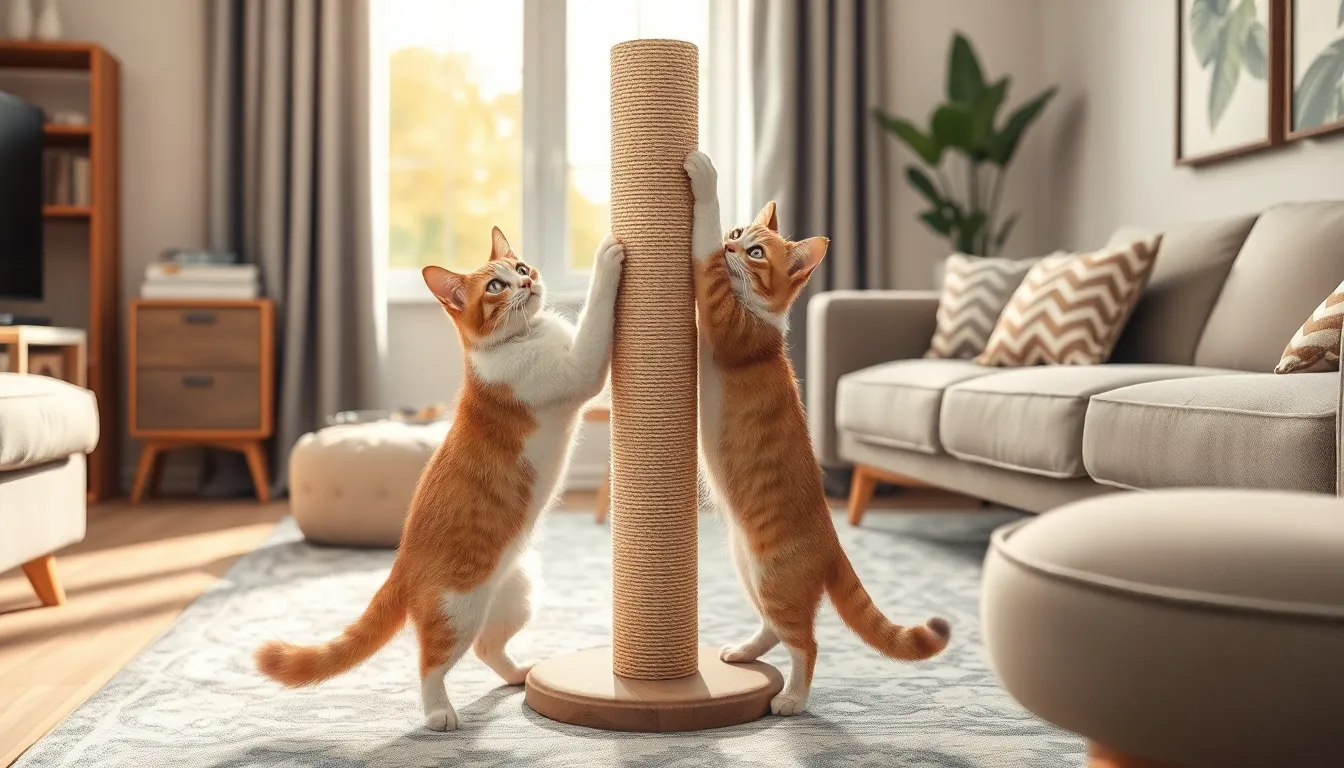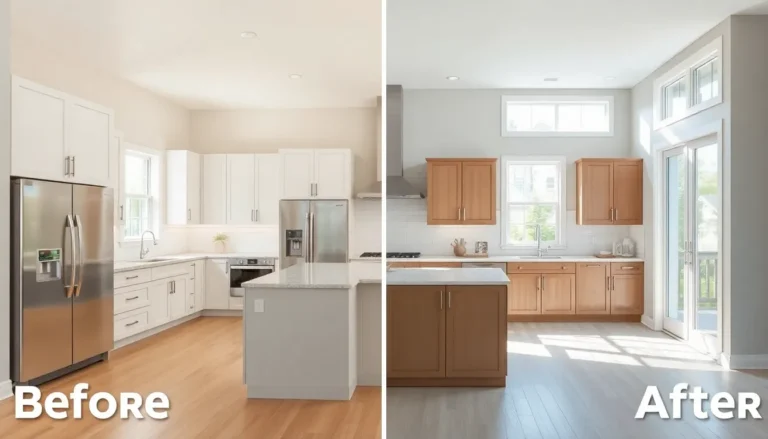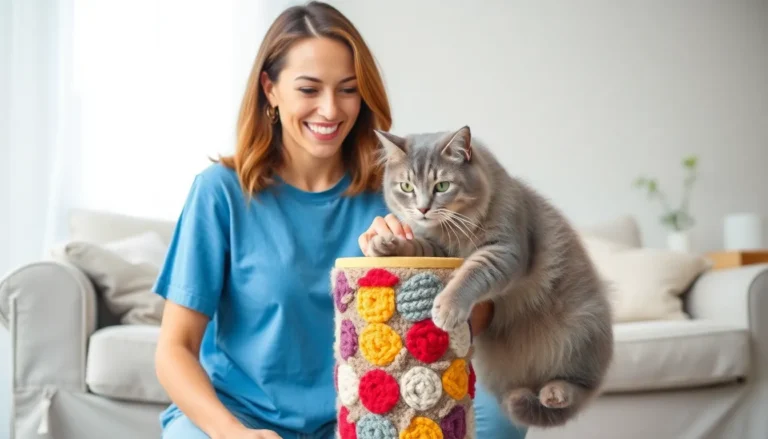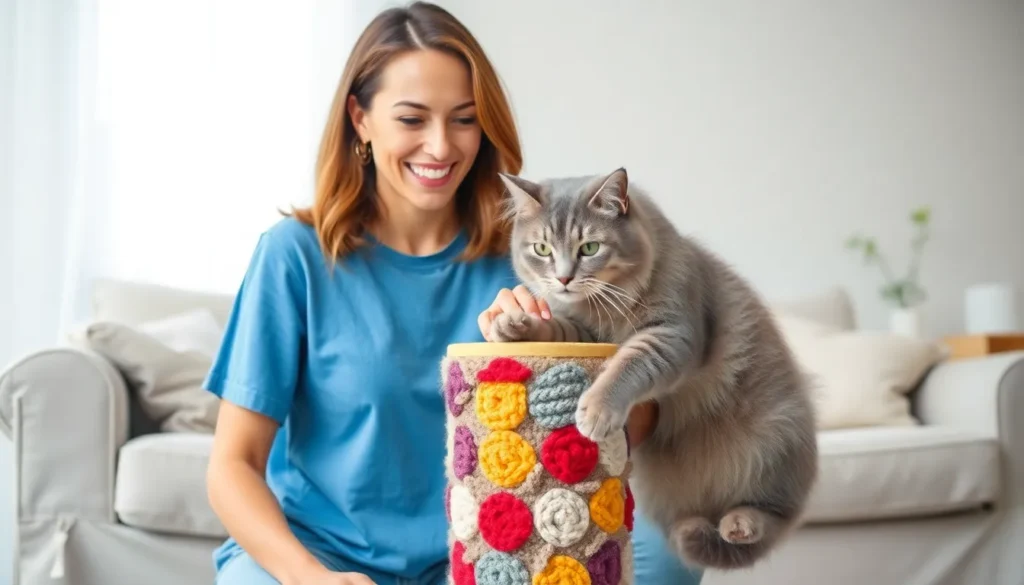Table of Contents
ToggleCats are adorable little furballs, but their love for scratching can turn any stylish sofa into a shredded masterpiece. While they might think they’re auditioning for a feline version of “Project Runway,” most pet owners are left wondering how to save their beloved furniture from becoming a scratching post.
Fear not! With a mix of clever strategies and a sprinkle of humor, keeping those claws at bay is easier than you think. From DIY solutions to store-bought wonders, there’s a world of options that can protect your furniture while keeping your kitty happy. So, let’s dive into the purr-fect ways to keep your home scratch-free and your feline friend entertained.
Understanding Cat Behavior
Cats scratching furniture is a natural part of their behavior. Knowing the reasons behind this habit helps in addressing the issue more effectively.
Why Cats Scratch
Cats scratch for several reasons. They mark their territory by leaving scent marks from glands in their paws. Scratching also helps keep their claws sharp and healthy. It serves as a method for stretching muscles, providing physical exercise. Additionally, cats often engage in this behavior when they feel anxious or bored, making it a form of stress relief. Understanding these motivations is crucial for developing a strategy to deter the behavior without causing harm to the cat.
Benefits of Scratching for Cats
Scratching offers multiple benefits for cats. It provides essential exercise that supports physical well-being. Mental stimulation occurs as they explore different surfaces, preventing boredom. Scratching also encourages natural claw maintenance, preventing potential health issues. Furthermore, it serves as an effective way for cats to relieve stress and express their emotions. Recognizing these benefits sheds light on why it’s integral to find solutions that accommodate both the cat’s needs and the owner’s desire to protect furniture.
Effective Strategies to Keep Cats From Scratching Furniture

Cats thrive when they have appropriate outlets for their scratching instincts. Different strategies can create an environment where both cats and furniture coexist peacefully.
Providing Alternatives
Scratching posts offer essential alternatives. Tall and sturdy options engage cats, allowing them to stretch and scratch. Choosing posts made from sisal or cardboard provides satisfying textures. Cat trees incorporate multiple levels, encouraging play and scratching. Place these alternatives near the furniture cats usually target. Situating them in prominent areas helps redirect the scratching behavior.
Using Deterrents
Deterrents can discourage cats from scratching furniture effectively. Citrus scents often repel cats, so sprays based on these fragrances are helpful. Sticky tape placed on furniture surfaces creates an unappealing texture. Commercially available products with pheromones redirect your cat’s attention, guiding them toward desired scratching locations. Regularly refreshing deterrents maintains their effectiveness, keeping cats from returning to the furniture.
Covering Furniture
Furniture covers add a layer of protection against scratching. Using slipcovers or waterproof fabrics protects upholstery while maintaining aesthetics. Additionally, furniture-specific scratch guards are available, fitting conveniently over corners and edges. These guards create a barrier, preventing damage while allowing visual appeal. Arranging such covers enhances durability and ensures your furniture remains scratch-free.
Training Techniques
Training techniques help modify a cat’s scratching behavior while respecting its natural instincts. Applying strategies like positive reinforcement and redirecting scratching behavior effectively minimizes furniture damage.
Positive Reinforcement
Positive reinforcement encourages desired behaviors by rewarding cats for scratching appropriate surfaces. Offer treats or praise whenever they use designated scratching posts. Create a routine where rewards are consistent, reinforcing good behavior over time. Using this method builds a positive association between scratching and rewards. Increasing the number of scratching posts around the home provides more opportunities for reinforcement. The goal is to make appropriate scratching enticing, leading to less activity on furniture.
Redirecting Scratching Behavior
Redirecting scratching behavior requires providing alternatives that fulfill a cat’s instinct to scratch. Placing scratching posts in strategic locations near furniture diverts attention and encourages use of the right surfaces. Offering various scratching materials, like cardboard or sisal, varies the experience. Engaging cats with playtime near these alternatives increases the likelihood they’ll choose scratching posts over furniture. Transitioning to positive interactions through redirection strengthens the bond, making it enjoyable for both cats and their owners.
Maintaining a Cat-Friendly Home
Creating a cat-friendly home involves making choices that minimize furniture damage while keeping cats content. Simple adjustments can make a significant difference in protecting furniture.
Choosing the Right Furniture
Selecting durable furniture materials helps resist scratching. Fabrics like leather or tightly woven upholstery withstand wear and tear more effectively than softer materials. Additionally, avoiding light-colored furniture prevents visible scratches from becoming a major concern. Consider design elements that incorporate scratching surfaces, such as built-in sisal fabric or textured surfaces. Choosing furniture with less exposed wood lowers the risk of damage. Prioritizing robust materials benefits both the home aesthetic and the cat’s needs.
Regular Nail Care
Regular nail trims prevent excessive scratching damage. Trimming a cat’s claws every three to four weeks helps manage their scratching behavior. Using specialized cat nail clippers ensures a safe experience. Additionally, providing scratching posts encourages natural claw maintenance, promoting healthy nails. Catching the cat in a relaxed state makes the trimming process easier. Keeping treats on hand reinforces positive experiences associated with nail care. Regular maintenance aligns with your goal of preserving furniture while supporting your cat’s natural instincts.
Finding the right balance between protecting furniture and keeping cats happy doesn’t have to be a daunting task. By understanding a cat’s natural instincts and providing appropriate alternatives, pet owners can create a harmonious living space. Implementing strategies like scratching posts and positive reinforcement can significantly reduce unwanted scratching while fostering a cat’s well-being.
Incorporating durable materials and regular nail care further enhances this balance. With a little patience and creativity, it’s entirely possible to maintain a scratch-free home while ensuring that feline friends thrive. Embracing these solutions not only protects cherished belongings but also strengthens the bond between cats and their owners.






